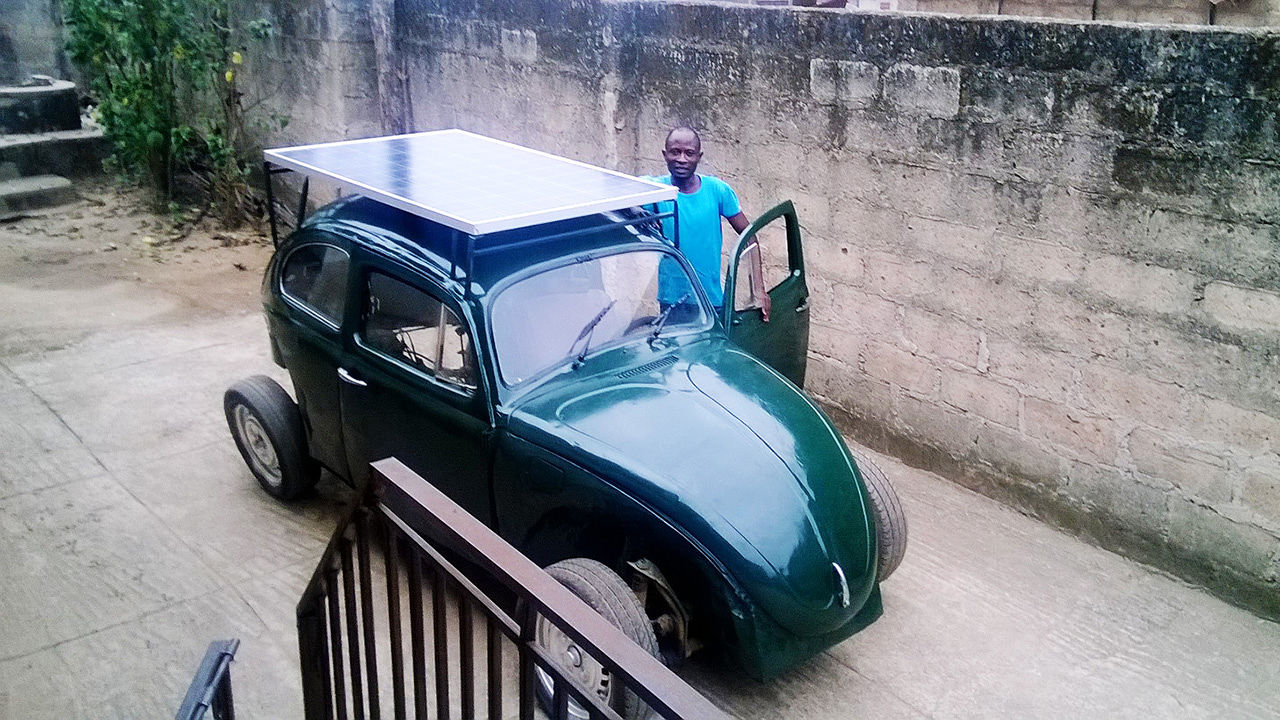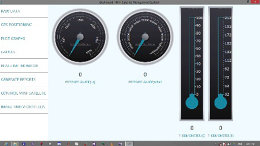
[Image: Abstract via Shutterstock]
When it comes to the success of the electric car, billionaire Elon Musk is viewed as nothing short of a miracle worker. But roughly 8,000 miles away from Tesla's Palo Alto headquarters, Segun Oyeyiola has also managed to make something extraordinary on a smaller scale. The engineering senior at Nigeria's Obagemi Awolowo University spent a year retrofitting a Volkswagen Beetle into a wind and solar-powered car, partly made of free scrap parts donated by friends and family. Everything else cost under $6,000.
There's little question as to why Oyeyiola, who is taking his finals in the next two weeks, would devote so much of his extra-curricular time and resources to the project.
As he wrote in an email to Co.Exist:
"I wanted to reduce carbon dioxide emission[s] going to our atmosphere that lead to climate change or global warming which has become a new reality, with deleterious effect: seasonal cycles are disrupted, as are ecosystems; and agriculture, water needs and supply, and food production are all adversely affected."
"Therefore, I came up of building a car that will use both winds and solar energy for its movement," he continued. "This was my personal project because of the problem I’m planning to solve."

Dr. John Preston, chair of McMaster University's engineering physics department and faculty advisor to the school's solar car team, says he's never seen anything like Oyeyiola's contraption, which also comes with a GPS app that monitors car health. "If you could find a way to use both wind and solar in the same vehicle, that would be a marvelous thing," he said. "Using wind and solar means you wouldn't have to drive just during daylight hours. If he has figured a way to do it, that would be quite remarkable."
Not only did Oyeyiola install a giant solar panel on top of the Beetle; he also inserted a wind turbine under the hood. As Preston explains, that allows air to flow into the grill while the car is moving, subsequently turning the turbine's rotors and charging the battery at the back of the car. Oyeyiola also built a strong suspension system to deal with the weight of the battery itself.
It's not perfect. The battery takes four to five hours to charge, but Oyeyiola says he's working on that. The biggest challenges, he says, came from finding the best materials to use, and the people telling him he was wasting his time.
That last part doesn't seem like it'll stop Oyeyiola, who wants to create solar- and wind-powered cars that take advantage of hot, sunny Nigerian weather. When I ask him what will happen to the car after he finishes his last finals on May 15, his answer is simple, straightforward: "Keep improving on it, until it becomes Nigeria's future car."


You actually make it seem so easy with your presentation but I find this topic to be really something which I think I would never understand. It seems too complicated and extremely broad for me. I’m looking forward to your next post, I will try to get the hang of it!
ReplyDeletecar removal brisbane
free car removal brisbane
Great post. I used to be checking constantly this weblog and I am inspired! Extremely useful information specially the ultimate part :) I maintain such info much. I used to be seeking this particular information for a very lengthy time.
ReplyDeleteThank you and good luck.
cash for cars melbourne
car buyer Melbourne
This comment has been removed by the author.
ReplyDelete